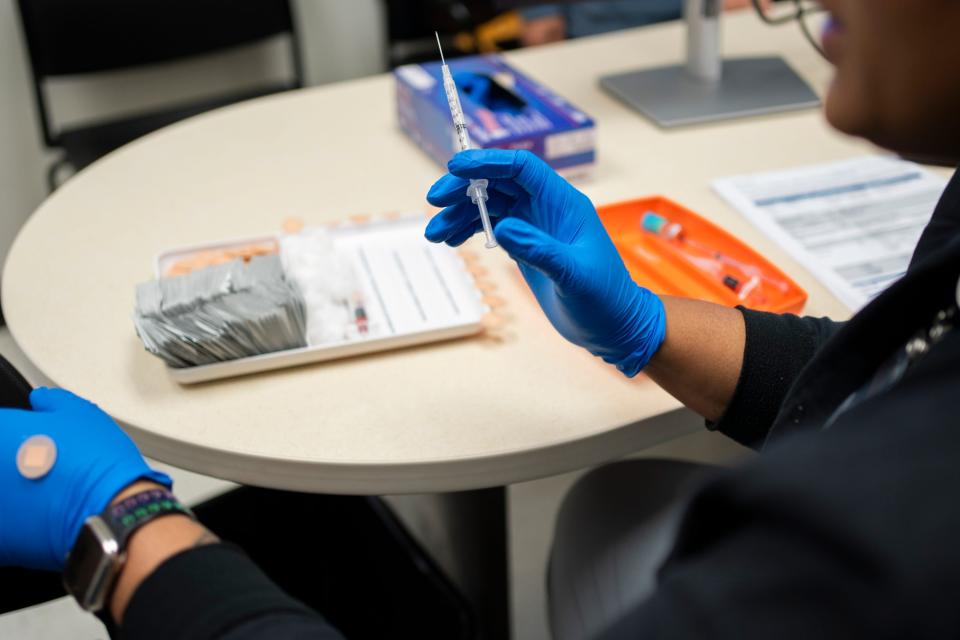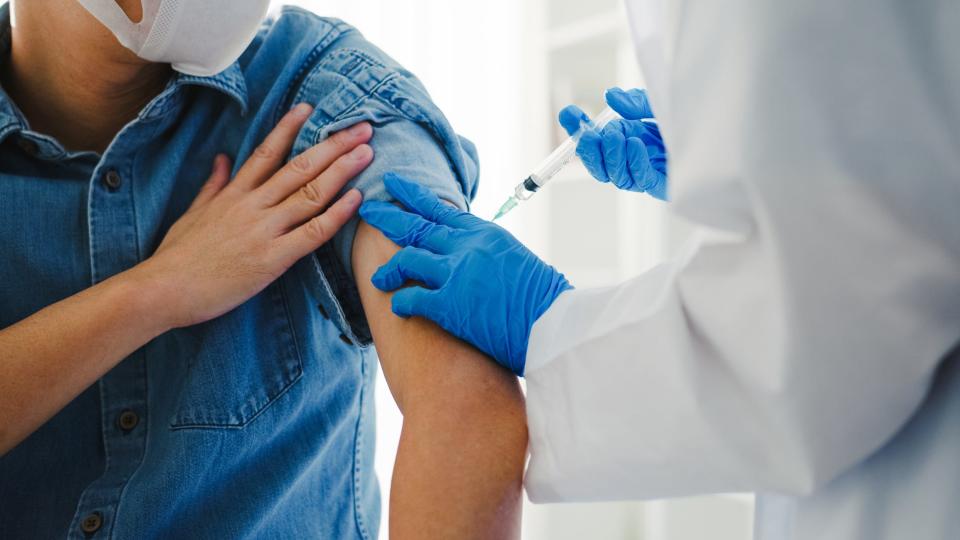As Thanksgiving approaches, yes, it's still worth it to get your flu shot. Here's why.
It's not too late to get that annual flu shot before Thanksgiving.
Experts say it's safe to get the vaccine one week ahead of time, and it's wise to consider it if you're traveling to visit friends and family. Interactions across the generations, for example, between school-age children with their grandparents, are ripe moments for the influenza virus to spread under one roof.
“This is something influenza absolutely loves,” said Dr. Jonathan Temte, an associate dean at the University of Wisconsin School of Medicine and Public Health.
Seasonal flu, a respiratory virus, thrives when people are indoors in the colder months, mostly from November through February, spreading through droplets in the air, when someone coughs or sneezes, or through germs that accumulate on surfaces.
You can prepare for the holiday season by taking steps to avoid passing on germs to friends and family as flu cases begin to rise, along with other respiratory illnesses, such as COVID-19 and respiratory syncytial virus, or RSV.
Updated guidance: There's a shortage of RSV shots for babies. See the CDC's new guidance on who can get them

Cases are up. So what?
There has already been a slight uptick in cases, according to the Centers for Disease Control and Prevention’s weekly flu tracker. Cases appear to be increasing in the southeastern, south central and West Coast regions of the U.S. Hospital admissions have also increased across the U.S. in recent weeks. The first child died of the flu this season, the CDC said in its latest report.
While the impact is still marginal, it indicates that flu rates are increasing.
“The bottom line is that the flu is not to be trifled,” Dr. Nirav Shah, principal deputy director for the CDC, told USA TODAY. “It is not just a cold. It is a serious disease that can land you in the hospital and sadly, unfortunately, kill people, too.”
Older people, pregnant people and infants are at greater risk of hospitalization or death from the flu. In the 2021-22 season, the U.S. saw an estimated 5,000 deaths and 100,000 hospitalizations linked to influenza.
‘Treating both ends of the leash:' How a new Pittsburgh clinic treats humans, pets
What are flu symptoms, risks?
Unlike a cold, which has milder respiratory symptoms and generally does not cause a fever, the flu can bring serious complications. Flu symptoms include fevers or chills, cough, sore throat, runny or stuffy nose, muscle or body aches, headaches and fatigue.
Now is the best time to take preventative steps, people shouldn’t wait until hospitals become full or people start dying of the flu to get their shot, said Dr. Philip Huang, director of the Dallas County Department of Health and Human Services, in Texas. By late October, the CDC estimated less than 30% of the U.S. adults had gotten their flu vaccination.

How does the vaccine work?
The flu vaccine is an injection of an inactive form of the virus that helps a person develop antibodies to protect them if they're exposed to the illness.
“The vaccines will provide a form of protection to keep you from getting the flu,” said Jodie Guest, vice-chair of epidemiology at the Rollins School of Public Health at Emory University, in Atlanta. “If you do get the flu, they lessen your symptoms and the duration of your symptoms.”
Annual flu vaccines protect against four different viruses, based on the strains that are expected to be dominant this season. Some flu seasons are worse than others depending upon which viruses are circulating.
The shot, of course, isn’t foolproof. Viruses change constantly, making it necessary for public health officials to update the vaccines. Annual vaccines don't catch all strains, but they can still be effective at reducing illness caused by other viruses that are circulating.
Repeat: It’s not too late
Experts typically estimate that the vaccine is at full effectiveness after about two weeks, but some protection is better than none.
The vaccine is typically free for people with health insurance. People without insurance can in many cases get the shot for free through their local health departments or clinics. While you're there, experts say, you can also update your COVID-19 and RSV vaccines.
None of the vaccines are a cure-all, but they do protect people from the risk of serious illness.
“The vaccines aren’t perfect, but what they’re really helping with is keeping people out of the hospital,” said Dr. Miranda Durham, the state chief medical officer for New Mexico. Her state has seen a slow start to the flu season, but she said there's an increase in COVID-19 cases.
After getting a shot, some people feel achy or feverish for a few hours or up to one day. That’s the vaccine getting the body’s immune system ready for the live virus.
What else can I do?
There are additional steps to keeping friends and family safe, many of which people learned during the COVID-19 pandemic. If you sneeze or cough into your sleeve, you'll curb the impact. And handwashing is another easy way to reduce the spread of the virus, the CDC said. Officials also recommend cleaning surfaces that have routine contact.
In crowded, enclosed areas, like on subways, buses, planes or airports, wearing a mask can help prevent the spread of the flu, COVID-19 and RSV. You can also reduce exposure by improving airflow, for example, by opening a window in your home or car.
There's one more tip: If you feel sick, stay at home.
Eduardo Cuevas covers health and breaking news for USA TODAY. He can be reached at EMCuevas1@usatoday.com.
This article originally appeared on USA TODAY: A flu shot is still worth it before the holidays. Here's why.

